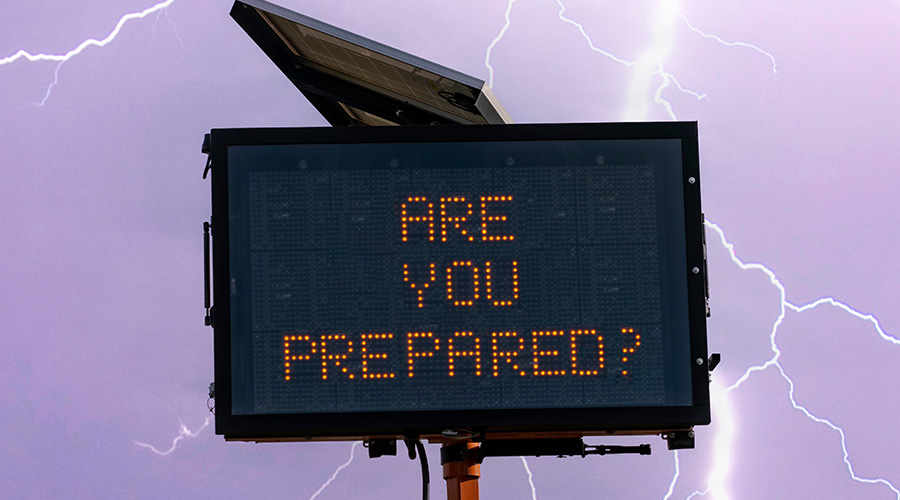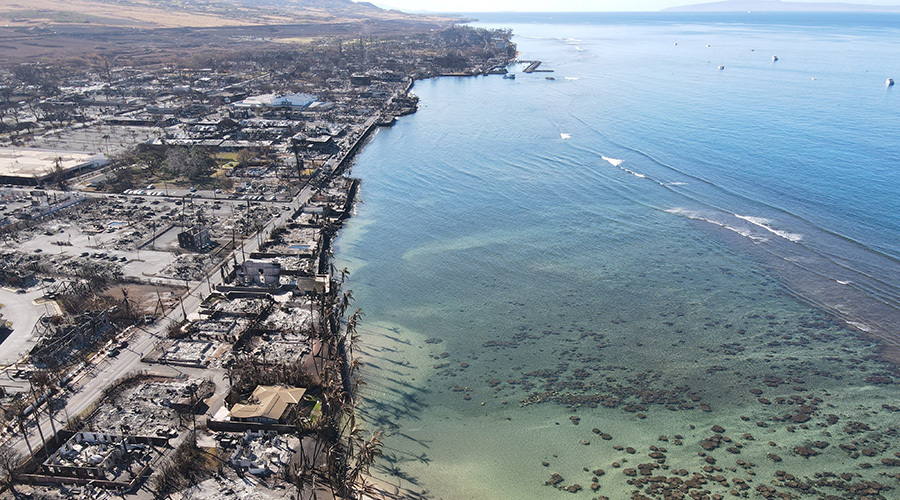AEDs
Life-saving technology is only part of the story
Much media attention has been given to the installation of automated external defibrillators (AEDs) in public spaces, such as airports, sports arenas and shopping malls, and their successful use by laypersons in emergencies. As a result of the many success stories, positive research results and outreach efforts, a growing number of AEDs are being installed in commercial office buildings and government facilities. Although purchasing and installing AEDs are important first steps in reducing the number of deaths from sudden cardiac arrest, facility executives should establish a formal AED action plan to ensure proper procedures are followed.
“Like a fire extinguisher, it is not only important to have equipment available but also to have people trained to locate and use the equipment appropriately in an emergency,” says Dr. Vinay Nadkarni, chairman of the emergency cardiovascular care committee of the American Heart Association.
“The average consumer believes an AED program is complete when they hang the unit on the wall, and that’s just not the case,” says Michael Bush, vice president of marketing for Complient Corp.
AED Background
First introduced to the medical community in the 1980s, defibrillators are computerized devices that evaluate the heart rhythm of a person in cardiac arrest and determine through electrode pads if the rhythm is abnormal and whether the heart can be “shocked” back to normal. Today’s units are about the size of a lunchbox and weigh 3 to 4 pounds. The devices average less than $3,000 per device vs. $7,500 per device in the early 1990s and are easier to use thanks to voice prompts and screen instructions. Preprogrammed to shock only when appropriate, AEDs are considered risk-free to both the victim and the user.
“Generally, you can’t hurt anyone with an AED unless you drop it on his or her foot,” says Tracy Byers, director of marketing in North America for Philips Medical’s cardiac resuscitation solutions division.
AEDs are considered a critical line of defense because the sooner the heart rhythm can be restored, the greater the chance of survival without permanent brain damage. When a person suffers cardiac arrest as a result of ventricular fibrillation, the heart can stop beating entirely, which stops the flow of blood to the rest of the body and causes the victim to become unconscious. This is different from a heart attack, which interrupts blood flow only to the heart. The majority of heart attack victims survive their first attack, while approximately 95 percent of sudden cardiac arrest victims die before reaching the hospital if CPR and defibrillation are not provided within the first few minutes of arrest.
“CPR, combined with an AED, is the one-two punch that can mean the difference between life and death for a victim of sudden cardiac arrest,” Nadkarni says.
“If we can get a device there in three minutes or less, there is a good chance these people can regain a full and healthy lifestyle,” says Doug Hakala, senior manager of commercial markets for Medtronic Physio.
Key Program Elements
Developing an AED program does not have to be an overwhelming effort, but it should be thorough. To get started, industry experts recommend the following guidelines:
- Determine program goals. Research demonstrates that victims of sudden cardiac arrest have the highest survival rate if 911 is called and CPR and AED shock are provided within the first three to five minutes. A successful AED plan would provide sufficient equipment to reach a victim anywhere in the facility within this timeframe. “Time is the critical element of any AED plan,” says Dr. Vince Mosesso, director of the National Center for Early Defibrillation and an assistant professor of emergency medicine at the University of Pittsburgh.
Of course, purchasing AEDs and providing training must fit within a facility’s budget. One option gaining momentum, according to Dan Moon, national account manager for Complient Corp., is a partnership between building personnel and tenants, with building personnel providing sufficient equipment to cover public spaces, and tenants providing equipment for their immediate areas. Another option is to implement equipment gradually. “If you have a large facility, your plan might be to purchase three units in the first quarter of the year and an additional three units in the third quarter,” says Moon.
- Identify key personnel. A successful AED program has a dedicated team leader. At a minimum, the team leader would review federal, state and local requirements for AED use, coordinate the program with local emergency medical services, obtain a prescription for the device from a state-licensed physician and maintain the equipment. Some facilities choose to manage their programs internally, while others choose to outsource management of the program. Many AED manufacturers offer program management services in addition to equipment sales. “Someone is going to have to take responsibility that things are going to get done,” says Bob Miller, corporate account manager for Medical Research Laboratories.
- Review your facility. Because AED needs vary by facility, a facility walk-through will help determine where equipment is best located, the number of devices necessary and how many responder teams are needed. “A thorough site assessment looks at the potential delays for getting equipment to the victim,” Byers says. “Where are doors locked? Are there security checkpoints? Use a stopwatch to determine the real time it takes to get from point A to point B.”
- Organize training sessions. One great advantage of today’s AEDs is their ease of use. However, formal training and up-to-date certification by recognized providers, such as the American Heart Association, the National Safety Council and the American Red Cross, are mandated by federal law, as well as by most local and state laws. Sessions can generally be completed in four hours or less. It also is important for program managers to maintain complete records regarding training. “There are cases of people and children using AEDs easily, without training,” Hakala says. “But training often has more to do with building confidence, ensuring rescuers can respond in an efficient, deliberate way.”
- Communicate with others. Outreach to tenants and to employees is the final step in a good AED plan. “It doesn’t help to buy the equipment and not have anyone know where it is,” Byers says. In-house newsletters or posters in break rooms are effective ways to promote general awareness and interest, to update personnel about program status or to inform them about training sessions. AED programs also can be a selling point to prospective tenants. “AEDs are big news today,” Miller says. “They’re becoming public expectation, and they show tenants and employees that you’re doing something to provide a more secure work environment.”
Kathryn M. Rospond is a free-lance writer.
Related Topics:











